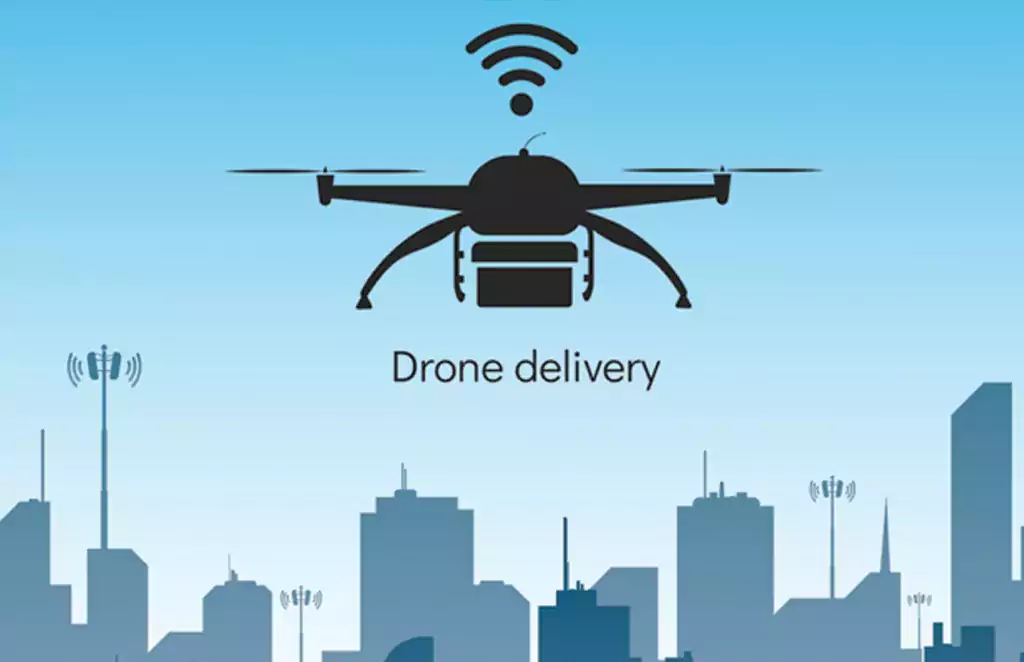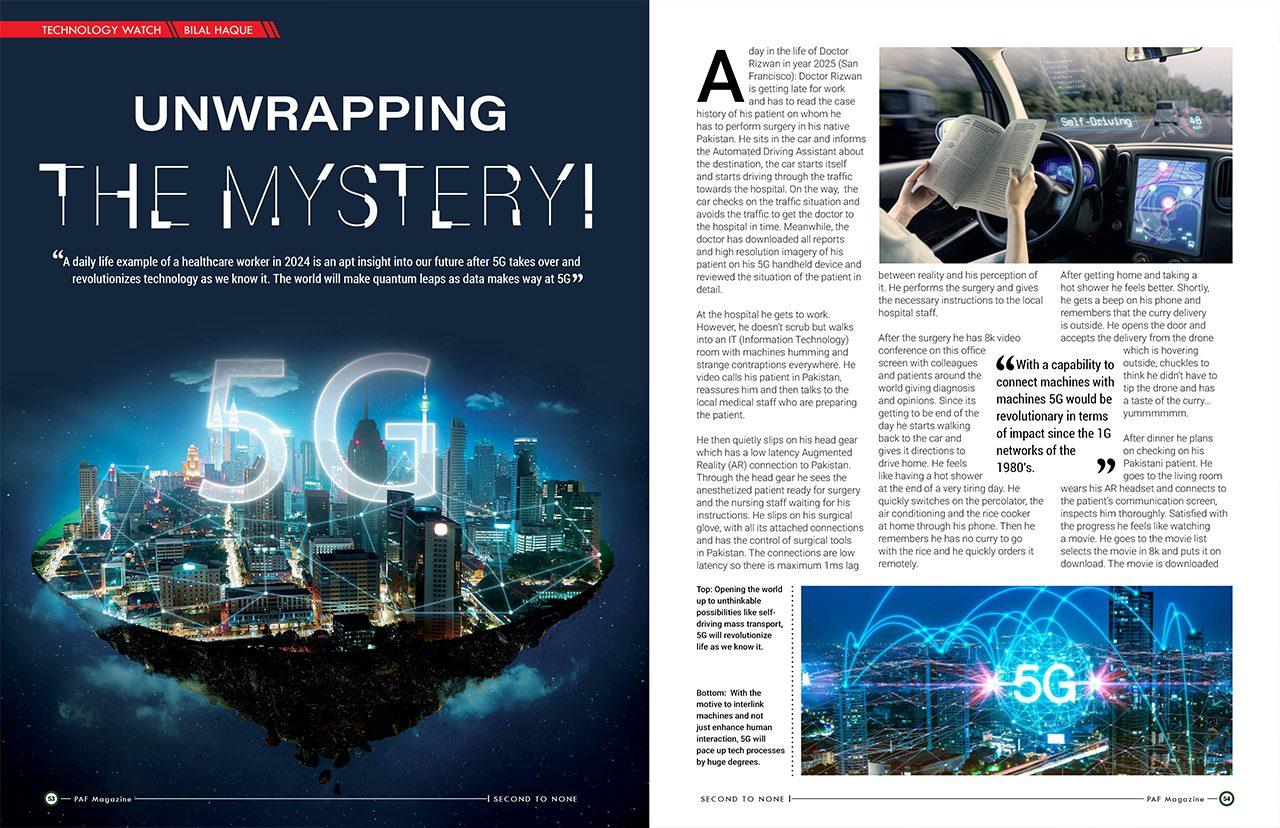A daily life example of a healthcare worker in 2024 is an apt insight into our future after 5G takes over and revolutionizes technology as we know it. The world will make quantum leaps as data makes way at 5G
Aday in the life of Doctor Rizwan in year 2025 (San Francisco): Doctor Rizwan is getting late for work and has to read the case history of his patient on whom he has to perform surgery in his native Pakistan. He sits in the car and informs the Automated Driving Assistant about the destination, the car starts itself and starts driving through the traffic towards the hospital. On the way, the car checks on the traffic situation and avoids the traffic to get the doctor to the hospital in time. Meanwhile, the doctor has downloaded all reports and high resolution imagery of his patient on his 5G handheld device and reviewed the situation of the patient in detail.
At the hospital he gets to work. However, he doesn’t scrub but walks into an IT (Information Technology) room with machines humming and strange contraptions everywhere. He video calls his patient in Pakistan, reassures him and then talks to the local medical staff who are preparing the patient.
He then quietly slips on his head gear which has a low latency Augmented Reality (AR) connection to Pakistan. Through the head gear he sees the anesthetized patient ready for surgery and the nursing staff waiting for his instructions. He slips on his surgical glove, with all its attached connections and has the control of surgical tools in Pakistan. The connections are low latency so there is maximum 1ms lag between reality and his perception of it. He performs the surgery and gives the necessary instructions to the local hospital staff.
After the surgery he has 8k video conference on this office screen with colleagues and patients around the world giving diagnosis and opinions. Since its getting to be end of the day he starts walking back to the car and gives it directions to drive home. He feels like having a hot shower at the end of a very tiring day. He quickly switches on the percolator, the air conditioning and the rice cooker at home through his phone. Then he remembers he has no curry to go with the rice and he quickly orders it remotely.
After getting home and taking a hot shower he feels better. Shortly, he gets a beep on his phone and remembers that the curry delivery is outside. He opens the door and accepts the delivery from the drone which is hovering outside, chuckles to think he didn’t have to tip the drone and has a taste of the curry…yummmmmm.

After dinner he plans on checking on his Pakistani patient. He goes to the living room wears his AR headset and connects to the patient’s communication screen, inspects him thoroughly. Satisfied with the progress he feels like watching a movie. He goes to the movie list selects the movie in 8k and puts it on download. The movie is downloaded in less than 1 minute, before he could reply to a personal email…..yes emails in 2025….. still!
Sitting back and reflecting he is amazed at the advances in technology which have increased his productivity from only 5 years before. The concepts of remote surgery, self driving and drone delivery didn’t exist then.
The framework for all the applications which Dr Rizwan used in his day was provided by the recently deployed 5G network. As the name suggests, this is the 5th iteration of cellular standards and the most different. The first popular cellular standards which came out during the 80s were AMPS and NMT. They provided basic cellular mobile voice communications and were revolutionary as they introduced mobility for the first time. The 2G networks came out in the 90s and included CDMA and GSM with digital radio and some data capability. Some of these networks even exist in today’s world and are faithfully serving us.
The acronym 3G was branded and we saw the dawn of the 3rd generation of cellular networks. With a focus on data along with voice they made data use cases easier, user friendly and faster than ever before. However by now subscribers appetite for data had been whetted and they wanted data to be faster and ubiquitous. This ushered in the dawn of 4G networks which emphasized data and made voice just one of the applications of a mobile device.
Fast forward to 2010: With the ever increasing demand for data ubiquity, speed and new requirements like the Internet of things (IoT), low latency, remote and enhanced experiences (Augmented and Virtual reality) a new 5th generation cellular data standard was being envisioned. With a capability and emphasis to connect machines with machines rather than only humans to humans 5G would be the most revolutionary in terms of impact since the 1G networks of the 1980s.
So, what is a ‘standard’ and how do we come up with one? Historically speaking, history in this case being fairly recent, since the 1G standards and till today a need has existed to keep the capability set, interfaces and uses cases in a frame work. This framework is generally called a standard which defines the end customer use cases, the interfaces and capability of networks. Again, historically there have been multiple standard writing bodies, however today they have collapsed into one dominant and generally recognized body called the 3GPP.
The third generation partnership program (3GPP) is a body of mobile operators, vendors, regulators and now all kinds of electronic devices and apparatus makers besides other stake holders in use cases which defines and evolves a generation standard over the length of its life.
Each standard has a gestation and deployment period of around ten years during which time its conceived, agreed upon and widely deployed. 2020 is seeing the wide acceptance and deployment of the 5G standard. As mentioned earlier 5G is different from all the pre-existing cellular mobile standards as its designed from its very inception to include machine to machine (m2m) communications.
In light of the recent global events about Corona virus and the false claims linking it to 5G, it needs to be mentioned that creating a virus through cellular infrastructure is utter rubbish and impossible. The Federal Communications Commission (FCC) in the US and similar bodies all over the world have carried out extensive tests and have found no unacceptable 5G health risk so far.
5G when fully deployed will spawn new uses cases, and therefore new businesses, not yet existing. It will influence transportation, medicine, education, entertainment, commerce, agriculture and sports……..almost everything in our daily lives will be impacted and enriched by 5G.
Hail to the new G king….may you have an enriching and prosperous reign!








